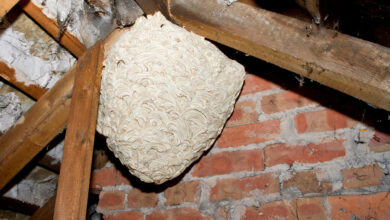
Cleaner Ponds: The Ultimate Guide to Crystal Clear Water and Healthy Aquatic Life
A pristine pond is not only visually appealing, but it also supports a thriving ecosystem. Whether you’re a passionate koi keeper, a wildlife enthusiast, or simply enjoy the tranquility of a backyard water feature, achieving and maintaining cleaner ponds should be a top priority. Crystal-clear water doesn’t happen by accident—it’s the result of strategic planning, regular maintenance, and choosing the right filtration equipment.
In this guide, we’ll explore how to achieve cleaner ponds using proven techniques, advanced pond equipment, and eco-friendly practices.
Why Cleaner Ponds Matter
A clean pond is essential for both aesthetic and ecological reasons. Dirty, algae-filled ponds not only look unsightly, but they also create a harmful environment for fish, plants, and beneficial bacteria. Clean water ensures:
- Healthy fish and aquatic plants
- Reduced algae and sludge buildup
- Improved oxygen levels
- Balanced water parameters (pH, ammonia, nitrates)
Step-by-Step Tips to Achieve Cleaner Ponds
1. Install a High-Quality Filtration System
The cornerstone of any clean pond is a reliable pond filter. Choose a system that suits your pond size and type. There are two main categories:
- Mechanical filtration: Removes physical debris such as leaves, waste, and sludge.
- Biological filtration: Converts harmful substances like ammonia and nitrites into less toxic compounds using beneficial bacteria.
For best results, consider drum filters, pressure filters, or multi-stage systems like those offered by Evolution Aqua or Burtons Aquatics.
2. Use an Effective Pond Pump
A powerful yet energy-efficient pond pump ensures constant water circulation. This prevents stagnation, improves oxygenation, and helps push debris toward the filtration unit. Pumps should be sized according to the total volume of your pond, with many experts recommending the full pond volume be circulated once every hour.
3. Keep Debris Out with a Skimmer
Pond skimmers are excellent tools for keeping surface debris like leaves, pollen, and insects from sinking to the bottom. By removing organic matter early, skimmers reduce sludge buildup and help maintain cleaner ponds with less effort.
4. Control Algae Naturally
Excessive algae is one of the biggest challenges in pond maintenance. To reduce algae:
- Add floating plants like water lilies or water lettuce to block sunlight.
- Install a UV clarifier to eliminate free-floating algae.
- Avoid overfeeding fish, as uneaten food adds nutrients that fuel algae blooms.
- Introduce algae-eating fish like plecos or snails.
5. Regularly Remove Sludge and Sediment
Even with good filtration, some organic waste settles at the pond’s bottom over time. Use a pond vacuum or sludge remover to eliminate buildup and prevent the development of harmful anaerobic zones that produce toxic gases.
6. Maintain the Right Plant-to-Fish Ratio
Overstocked ponds become dirty quickly. Follow this simple rule: for every 1000 litres of water, keep no more than 20cm of fish (combined length). Plants, especially oxygenators like hornwort and anacharis, help absorb excess nutrients and balance the ecosystem.
7. Test and Treat Your Water
Test kits should be used weekly to monitor pH, ammonia, nitrites, and nitrates. Treat the water when necessary using biological additives, beneficial bacteria, or water conditioners to stabilize conditions.
The Role of Beneficial Bacteria in Cleaner Ponds
Biological filtration relies on colonies of good bacteria to break down waste. To promote bacterial growth:
- Use high-quality filter media like K1 or K+ Media
- Avoid cleaning bio-media with chlorinated water
- Add bacterial boosters after water changes or filter cleanings
Seasonal Pond Cleaning Tips
- Spring: Perform a full inspection and deep clean to remove winter debris.
- Summer: Focus on algae control and topping off evaporated water.
- Autumn: Install netting to catch falling leaves and reduce sludge buildup.
- Winter: Use a de-icer or pond heater to maintain gas exchange if the pond freezes over.
Conclusion: Cleaner Ponds Are Achievable and Sustainable
Maintaining cleaner ponds is not about constant hard work—it’s about using the right equipment, following a routine, and respecting the balance of your pond’s ecosystem. By combining mechanical and biological filtration, regular maintenance, and eco-conscious practices, any pond owner can enjoy crystal-clear water and a flourishing aquatic environment year-round.
Invest in your pond’s future by choosing trusted equipment, minimizing waste, and understanding your pond’s unique needs. The reward is a beautiful, healthy space that adds value and peace to your outdoor living.






